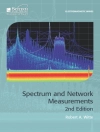Much work on analysis and synthesis problems relating to the
multiple model approach has already been undertaken. This has been
motivated by the desire to establish the problems of control law
synthesis and full state estimation in numerical terms.
In recent years, a general approach based on multiple LTI models
(linear or affine) around various function points has been
proposed. This so-called multiple model approach is a convex
polytopic representation, which can be obtained either directly
from a nonlinear mathematical model, through mathematical
transformation or through linearization around various function
points.
This book concentrates on the analysis of the stability and
synthesis of control laws and observations for multiple models. The
authors’ approach is essentially based on Lyapunov’s
second method and LMI formulation. Uncertain multiple models with
unknown inputs are studied and quadratic and non-quadratic Lyapunov
functions are also considered.
Table of Content
Notations ix
Introduction xiii
Chapter 1. Multiple Model Representation 1
1.1. Introduction 1
1.2. Techniques for obtaining multiple models 2
1.2.1. Construction of multiple models byidentification 3
1.2.2. Multiple model construction by linearization 8
1.2.3. Multiple model construction by mathematicaltransformation 14
1.2.4. Multiple model representation using the neuralapproach 22
1.3. Analysis and synthesis tools 29
1.3.1. Lyapunov approach 29
1.3.2. Numeric tools: linear matrix inequalities 31
1.3.3. Multiple model control techniques 38
Chapter 2. Stability of Continuous Multiple Models 41
2.1. Introduction 41
2.2. Stability analysis 42
2.2.1. Exponential stability 48
2.3. Relaxed stability 49
2.4. Example 52
2.5. Robust stability 54
2.5.1. Norm-bounded uncertainties 56
2.5.2. Structured parametric uncertainties 57
2.5.3. Analysis of nominal stability 60
2.5.4. Analysis of robust stability 62
2.6. Conclusion 63
Chapter 3. Multiple Model State Estimation 65
3.1. Introduction 65
3.2. Synthesis of multiple observers 67
3.2.1. Linearization 68
3.2.2. Pole placement 70
3.2.3. Application: asynchronous machine 72
3.2.4. Synthesis of multiple observers 75
3.3. Multiple observer for an uncertain multiplemodel 77
3.4. Synthesis of unknown input observers 82
3.4.1. Unknown inputs affecting system state 83
3.4.2. Unknown inputs affecting system state andoutput 87
3.4.3. Estimation of unknown inputs 88
3.5. Synthesis of unknown input observers: anotherapproach 93
3.5.1. Principle 93
3.5.2. Multiple observers subject to unknown inputs anduncertainties 96
3.6. Conclusion 97
Chapter 4. Stabilization of Multiple Models 99
4.1. Introduction 99
4.2. Full state feedback control 99
4.2.1. Linearization 101
4.2.2. Specific case 103
4.2.3. Stability: decay rate 106
4.3. Observer-based controller 113
4.3.1. Unmeasurable decision variables 115
4.4. Static output feedback control 119
4.4.1. Pole placement 122
4.5. Conclusion 126
Chapter 5. Robust Stabilization of Multiple Models 127
5.1. Introduction 127
5.2. State feedback control 129
5.2.1. Norm-bounded uncertainties 129
5.2.2. Interval uncertainties 131
5.3. Output feedback control 137
5.3.1. Norm-bounded uncertainties 137
5.3.2. Interval uncertainties 147
5.4. Observer-based control 150
5.5. Conclusion 156
Conclusion 157
APPENDICES 159
Appendix 1: LMI Regions 161
A1.1. Definition of an LMI region 161
A1.2. Interesting LMI region examples 162
A1.2.1. Open left half-plane 163
A1.2.2. Stability 163
A1.2.3. Vertical band 163
A1.2.4. Horizontal band 164
A1.2.5. Disk of radius R, centered at (q, 0) 164
A1.2.6. Conical sector 165
Appendix 2: Properties of M-Matrices 167
Appendix 3: Stability and Comparison Systems 169
A3.1. Vector norms and overvaluing systems 169
A3.1.1. Definition of a vector norm 169
A3.1.2. Definition of a system overvalued from a continuousprocess 170
A3.1.3. Application 172
A3.2. Vector norms and the principle of comparison 173
A3.3. Application to stability analysis 174
Bibliography 175
Index 185
About the author
Mohammed Chadli is Associate Professor at HDR (Habilitation), University de Picardie Jules Verne, UPJV-Amiens, France.
Professor Pierre Borne, Ecole Centrale de Lille, France. He is President of the IEEE-SMC society and is presently President of the IEEE France Section.












